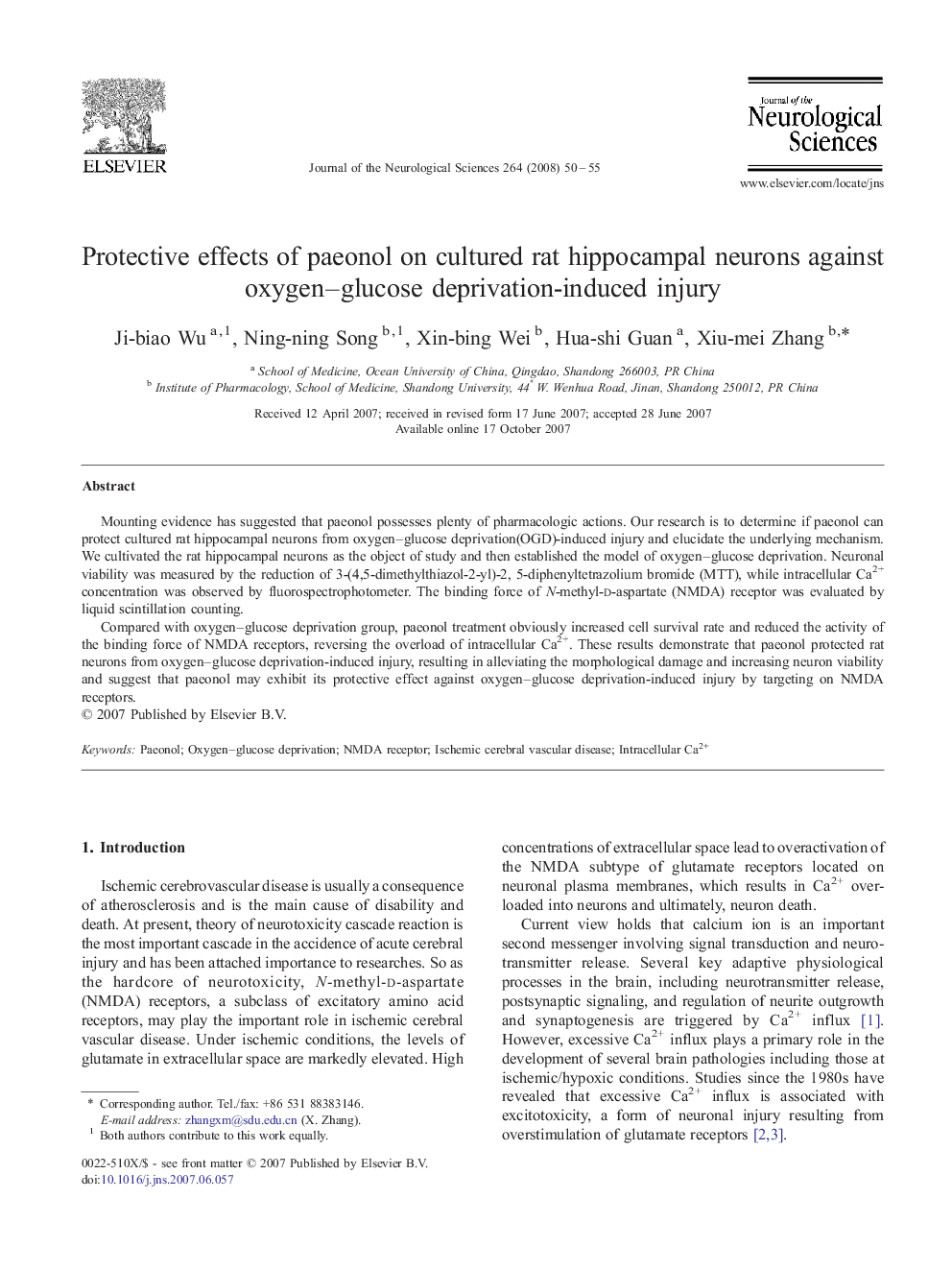| Article ID | Journal | Published Year | Pages | File Type |
|---|---|---|---|---|
| 1915970 | Journal of the Neurological Sciences | 2008 | 6 Pages |
Mounting evidence has suggested that paeonol possesses plenty of pharmacologic actions. Our research is to determine if paeonol can protect cultured rat hippocampal neurons from oxygen–glucose deprivation(OGD)-induced injury and elucidate the underlying mechanism. We cultivated the rat hippocampal neurons as the object of study and then established the model of oxygen–glucose deprivation. Neuronal viability was measured by the reduction of 3-(4,5-dimethylthiazol-2-yl)-2, 5-diphenyltetrazolium bromide (MTT), while intracellular Ca2+ concentration was observed by fluorospectrophotometer. The binding force of N-methyl-d-aspartate (NMDA) receptor was evaluated by liquid scintillation counting.Compared with oxygen–glucose deprivation group, paeonol treatment obviously increased cell survival rate and reduced the activity of the binding force of NMDA receptors, reversing the overload of intracellular Ca2+. These results demonstrate that paeonol protected rat neurons from oxygen–glucose deprivation-induced injury, resulting in alleviating the morphological damage and increasing neuron viability and suggest that paeonol may exhibit its protective effect against oxygen–glucose deprivation-induced injury by targeting on NMDA receptors.
